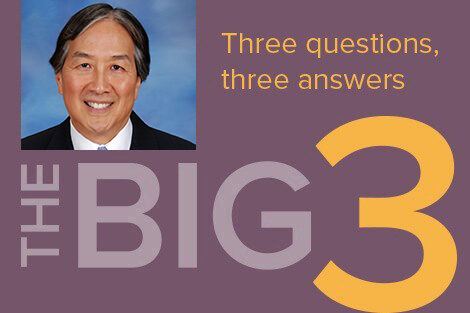January 12, 2021 – Howard Koh, Harvey V. Fineberg Professor of the Practice of Public Health Leadership, discusses the initial challenges of COVID-19 vaccination efforts in the U.S. and the need for a “one government” approach.
What’s your assessment of how the first few weeks of the vaccine rollout in the U.S. has gone?
This is the most ambitious vaccination effort in the country’s history. Any chance of having our country regain a sense of normality by late summer or early fall will require administering at least an estimated 1 million or more doses of vaccines daily. Everyone knew it was going to take seamless leadership, coordination, and cooperation to assure a smooth rollout, but we unfortunately haven’t had that. Multiple bumps in the road during the opening weeks have made the rollout disappointing.
As Massachusetts Commissioner of Public Health, I first had the honor of overseeing multiple vaccination efforts, including annual seasonal flu vaccine campaigns. Those projects always demanded close and constant collaboration between local and state health officials. Later, as Assistant Secretary for Health for the U.S. Department of Health and Human Services, I oversaw the National Vaccine Program Office and the National Vaccine Advisory Committee. We were charged with unifying national immunization implementation, with particular attention to vaccine safety. These are always herculean efforts, and the national vaccine rollout in 2009 during the H1N1 pandemic hit some bumps, too.
But ideally a “one government” approach—with federal, state, and local health officials working closely, sharing resources, and coordinating intensely—can generate some sense of a united effort for the United States. With vaccinations, as we have seen so often in other chapters of this pandemic response, 50 states are going in 50 different directions. To make prevention come alive for the entire country, we need to support overstretched state and local health officials who have been asked to rise to the challenge.
What are some of the immediate steps you hope to the see the incoming Biden administration take?
Establishing a national communication strategy is absolutely first priority. We have not had that at any point in the pandemic response to date. The public needs to hear regularly from top public health officials, convened and supported by the White House, about goals, progress, barriers, and ways we can all work together. We need to hear a clear message that we’re responding in a coordinated way as one nation.
Additionally, state and local public health officials need more dedicated support. Even before the pandemic, they have been under-resourced, underfunded, and overlooked. During COVID-19, exhausted state and local officials have been trying to implement testing, contact tracing, mask regulations, and policies to limit social gatherings. Now they must take on this huge challenge of vaccine distribution. We can’t keep asking them to do more with less. Fortunately, Congress just passed a $900 billion coronavirus relief package of which some $8 billion is dedicated for vaccine distribution and infrastructure. That money needs to be released as soon as possible.
What are some of the infrastructure elements that need to be improved or bolstered?
Infrastructure involves staff, supplies, space, and storage, but an overriding need is modernizing outdated information systems. The ones in many of our local health departments are archaic—some still involve pencil and paper—and this greatly hinders our ability to share information, gather good data in real time, allow aggregation and analysis for policymakers, and provide reliable public information about what’s happening at local and state levels.
Addressing shortages regarding personnel and facilities is also paramount. We need more people to help administer vaccines as supply and demand ramp up. Vaccinations that traditionally occurred only in medical settings have, over the years, diffused out more into the community. Twenty percent of Americans now get their seasonal flu shot at a pharmacy, for example. We’ve also increasingly seen how businesses, faith-based organizations, community centers and schools can help organize vaccination efforts. We need everyone to step up as partners to hit the targets needed to reopen our country. Only then can we once again see the miracle of a perfectly normal healthy day.
